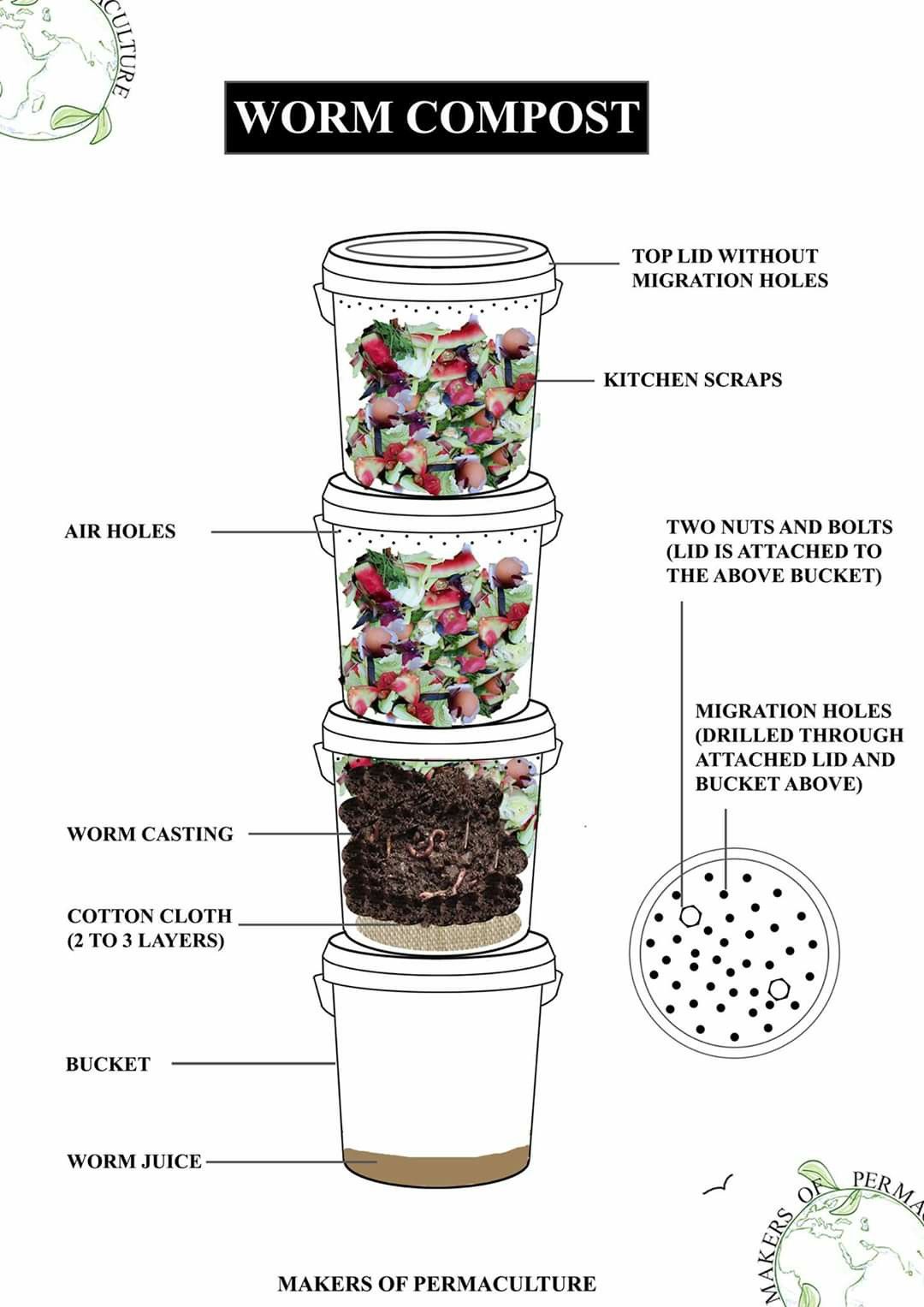“A simple stack of buckets transforms food waste into nutrient-rich compost and liquid fertilizer with the help of worms.”
♻️ How It Works
This system works on a layered bucket design, where each bucket plays a role:
- Top Bucket – Food Input
- Collects kitchen scraps (vegetables, fruit peels, eggshells, coffee grounds).
- A lid without migration holes keeps the waste enclosed.
- Middle Buckets – Worm Activity
- Contain air holes for oxygen.
- Worms live here, feeding on the scraps.
- Migration holes drilled between buckets allow worms to move upward when food in one layer is finished, leaving behind worm castings.
- Lower Bucket – Compost & Filter
- Holds the worm castings (the finished, soil-like compost).
- A cotton cloth layer (2–3 layers) acts as a filter to separate solid compost from liquid.
- Bottom Bucket – Worm Juice Collection
- Collects worm juice (liquid fertilizer) that seeps down.
- This nutrient-rich liquid can be diluted and used to feed plants.
🌍 Why It Matters
- 🚯 Reduces Household Waste – Keeps food scraps out of landfills.
- 🌿 Produces Organic Fertilizer – Both solid worm castings and worm juice are powerful natural fertilizers.
- 💧 Conserves Resources – Uses no electricity, just worms and time.
- 🪱 Self-Sustaining Cycle – Worms migrate upward naturally, keeping the process continuous.
👉 In simple terms: you feed the worms, they feed your soil. Kitchen scraps go in, rich compost and liquid fertilizer come out—turning everyday waste into gardening treasure.
